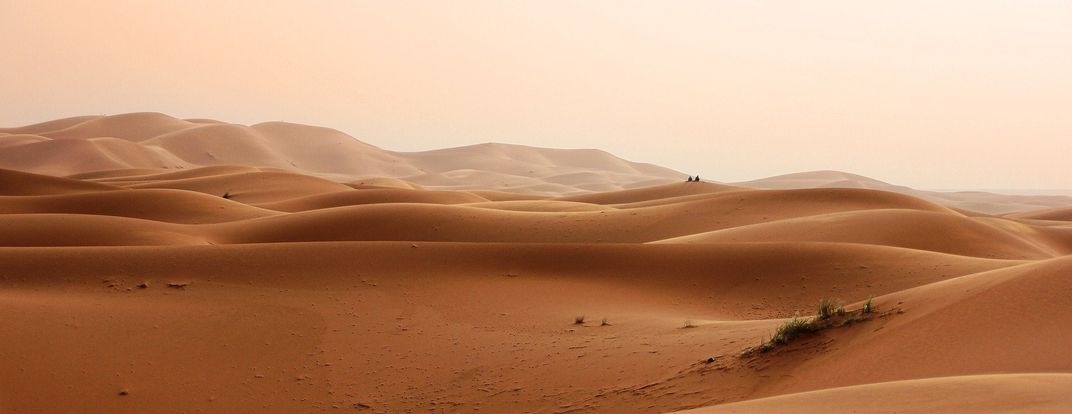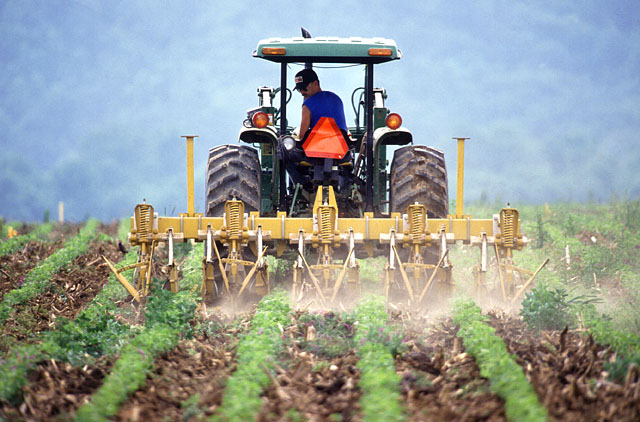NATIONAL MUSEUM OF NATURAL HISTORY
New Study Pushes Origins of Human-Driven Global Change Back Thousands of Years
Understanding people’s past land use strategies could help us better conserve global biodiversity now.
/https://tf-cmsv2-smithsonianmag-media.s3.amazonaws.com/blogging/featured/Native_person_manages_fire_burning_in_Australian_desert.jpg)
Conventional scientific wisdom holds that human-driven global change only began within the last few hundred years. But that theory neglects thousands of years of human history.
A new paper published today in the journal Proceedings of the National Academy of Sciences shows that people started changing the global landscape at least 12,000 years ago. This study, by scientists at the University of Maryland Baltimore County, Smithsonian’s National Museum of Natural History and others, explains how understanding people’s past land use strategies will help us better conserve global biodiversity now.
“It’s a story of shifting patterns of land use,” said Erle Ellis, a professor of geography and environmental systems at the University of Maryland, Baltimore and the lead author on the study.
12,000 years of global change
Nature today took shape around 12,000 years ago when the last ice age ended. The glaciers and ice sheets that covered most of the planet receded. Temperatures rose and temperate and tropical environments pushed farther north, opening expansive land ideal for human habitation.
“The time since the last glaciers came down and froze the planet is unique,” said Ellis. “It marked a turn for humans.”
They started forming communities that led to today’s rich diversity of societies. As human settlements appeared, people began to change how they used the land and interacted with plants, animals and broader ecosystems.
“Almost three quarters of the Earth’s land surface was inhabited and used in some way, even 12,000 years ago,” said Ellis.
Scientists once thought that ancient land use had very little effect on the world today. But the ways Indigenous peoples shaped the landscape over millennia is proving to have had a much greater impact on today’s landscapes.

“Throughout history, Indigenous peoples gathered an incredible amount of environmental knowledge that they passed through generations,” said Torben Rick, curator of North American archaeology at the Smithsonian’s National Museum of Natural History and a contributing author on the study. “There are important lessons to be learned from that traditional knowledge.”
The new research suggests that people have been using land sustainably and shaping landscapes for thousands of years, challenging the previous notions of natural scientists and conservationists that only land use over the last few hundred years or so has a significant impact on the present.
Reconstructing past landscapes
To model what Earth once looked like, the team created an interactive map that showed what global human land use looked like from 12,000 years ago to 2017.
“Basically, we integrated a bunch of different data sets on land use and population density into an anthropogenic model,” said Ellis. “This allowed us to visualize the way that people interact with landscapes and nature. It can be seen as another global force like climate.”
Using their model, Ellis, Rick and their collaborators could see that Indigenous peoples have been shaping landscapes and biodiversity for millennia longer than most natural scientists had originally assumed.
Nature today is the biproduct of millennia of sustainable Indigenous land use that took place globally - whether that meant using fire as a management tool, planting specific seeds, only hunting select species or harvesting timber in a particular way. The paper’s model depicts these patterns of land use and the evolution of landscapes over time which can then be compared to archaeological data from specific regions. It also provides archaeologists with a broad comparative data set that can shed new light on their individual research.
A more inclusive approach
We are in the midst of a biodiversity crisis where species are being lost globally. The use of land itself isn’t the issue behind this crisis. It’s the way we are using the land.
Industrial agriculture strips the land of biodiversity. To conserve the variety of life, land management could combine some intensive land use with traditional approaches that Indigenous peoples used to maintain the land for generations.
The study recognizes that modern farming and intense land use are necessary for producing enough food to feed the world’s population. Traditional land use simply isn’t productive enough by itself. But the study suggests a way forward by using both methods in tandem.

“There is very little scientific basis for conservation and restoration that does not involve Indigenous or traditional management,” said Ellis.
Incorporating new information about how past societies have shaped the land around them in sustainable ways is essential to plans for a better future.
“People are a part of nature; a part of the system and we have been for thousands of years. We’re living in a time where people are more disconnected from nature than we ever have been before,” said Rick. “A key to moving forward is to learn from past human land use and the strategies that many Indigenous peoples developed over millennia and restore our deep connections to nature.”
Related Stories:
How Film Helps Preserve the World’s Diversity
How Tiny Wasps Became Agricultural Defenders
Interdisciplinary Study Shows How Species Interactions Affect Evolution
These are the Decade’s Biggest Discoveries in Human Evolution

